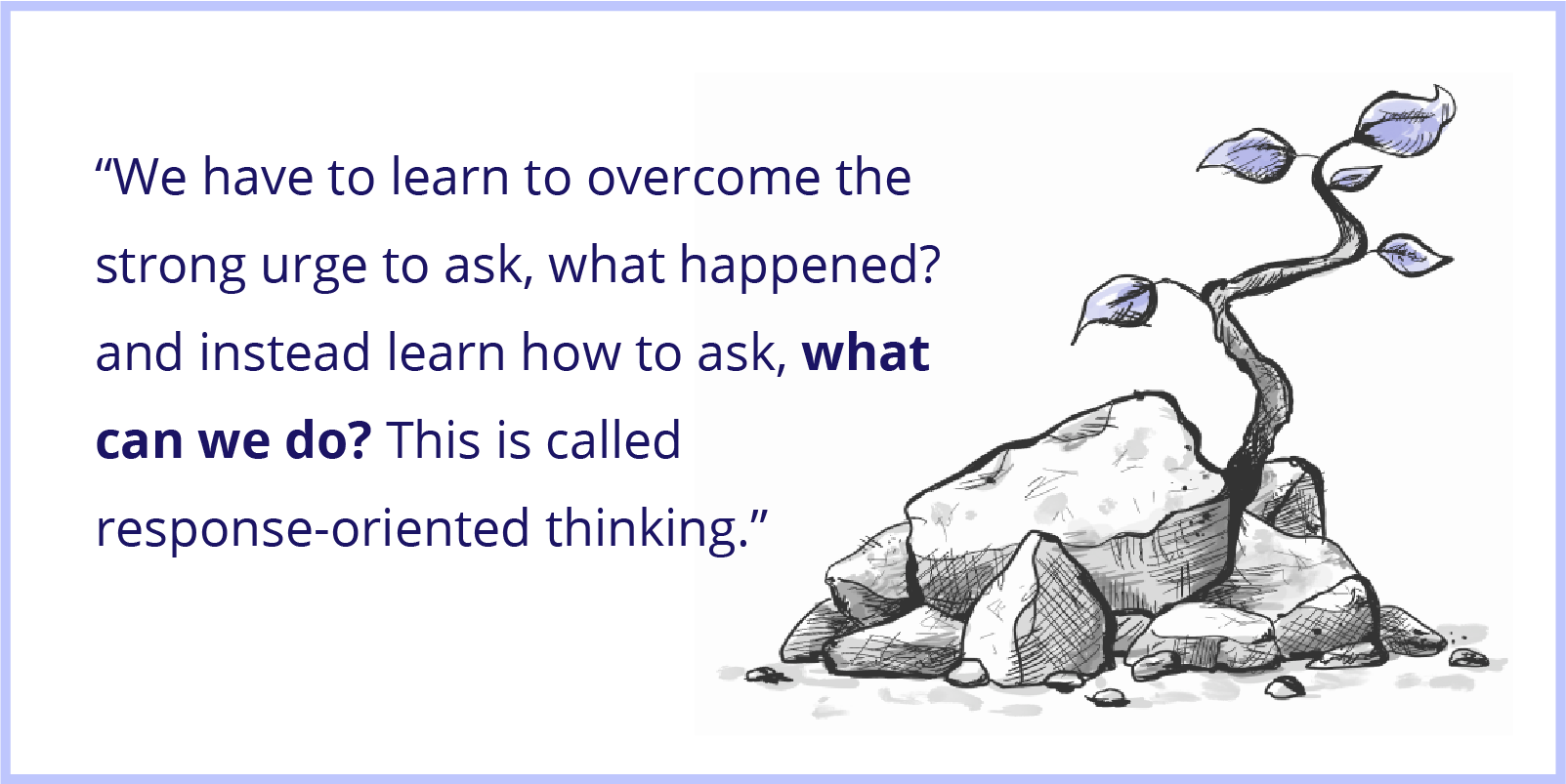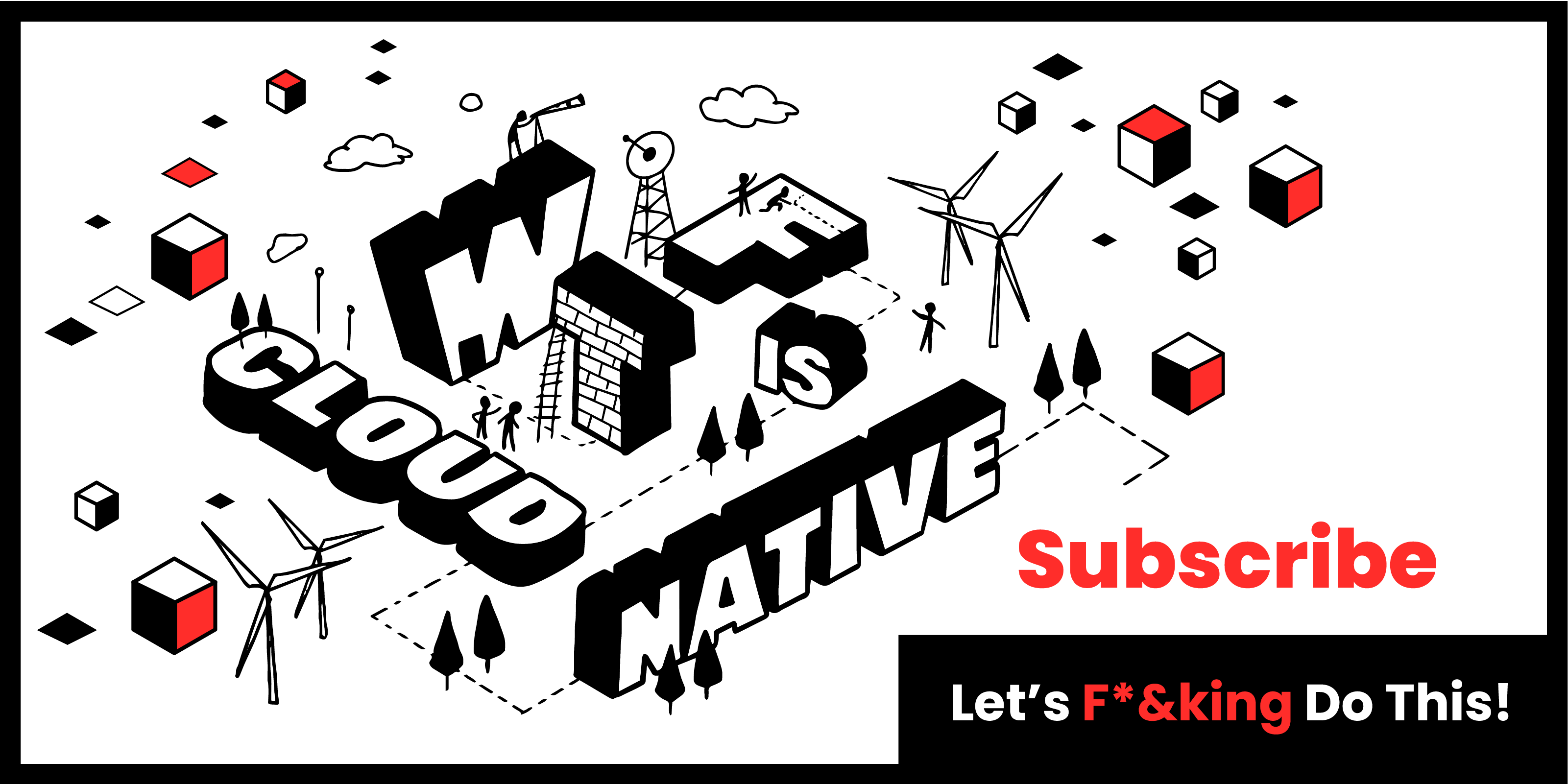Three key practices help us prepare for a crisis:
- Response-oriented thinking. A mindset that focuses on opportunity seeking rather than failure analysis.
- Developmental events. A way to frame the annual planning cycle as a tool for learning.
- Resilience at scale. A series of hiring and leadership practices that make sure resilience is constantly re-baked into a company’s DNA.
In this blog post, we’ll unpack each of these practices, showing how they—and the unexpected loss of a key client project in 2019—prepared us for COVID-19, the worst crisis we ever faced.
Practice 1: Response-Oriented Thinking
A few years ago, as I tried to deal with problems that a growing business throws at you, I started reading Stoic philosophy. I stumbled upon one technique that Seneca came up with as he struggled to live under the rule of the capricious emperor Nero.
Seneca would think of the most awful scenarios and then ask himself, ‘can I live with that?’ The death of a child? The loss of wealth and status? Seneca would visualise himself homeless, mourning, blinded, starving and shunned. He would then ask, can I live with that? The answer was always yes because humans can basically live with anything. By stepping through the scenarios, Seneca would disarm his fears, becoming confident as he came to see he could cope with anything.
Not surprisingly, thousands of years later, Seneca’s technique is still in use. It appears in both modern cognitive therapy and in resilience training for executives, where it is sometimes known as “response-oriented thinking”.
I started practicing Seneca's technique, building it into my weekly practice. By considering imagined scenarios - from the loss of my parents to the business blowing up - and my imagined responses, I was able to relieve my anxiety in much the same way Seneca and his students once did. As I got comfortable with these worst cases, I started to ask how I could change the fallout from these imagined scenarios into something positive. This sparked my creativity, artificially forcing me to search for meaning in my imagined trauma. By asking this second question, Seneca’s technique stopped being one that relieved me of anxiety and became one that let me seek out opportunities.
After a while, I started to research this more. I returned to Seligman’s work on positive psychology and also came across a 2010 HBR article, by Margolis and Stoltz, called ‘How to Bounce Back from Adversity’. We borrowed the name from the article, integrated some of their techniques, and added them to our own. Together, they would become the Container Solutions process for response-oriented thinking. It wasn’t long before we had the chance to practice this for real.
A Cash-Flow Crisis
In 2019, a project that was a key source of our revenue, with a partner we’d hoped to develop our 2020 strategy with, was cancelled. This plunged us into a cash-flow crisis that we knew had the potential to rapidly descend into a profitability crisis and thereafter an existential crisis.
We called a meeting and, for the sake of the new members on my team, I walked them over the response-oriented process. I asked the group to focus on asking the right, response-oriented questions, such as, ‘what can we do about this?’ instead of cause-oriented questions, such as, ‘could we have avoided this?’.
In real life, launching a response is always messy. However, there are three elements to the process that you can tease out:
- Envisaged Outcomes. What possible outcomes do we envision? What opportunities could be hidden? What can be done right now to improve this situation? What would we like things to look like 12 weeks from now? The questions must be oriented around building a response. They must be forward looking.
- Position. What can we legally do? What should we morally do?
- Options. From our current position and possible outcomes, we then plot a path forward. This is never about choosing between good and bad options. Rather, you have to choose between the lesser of two evils. It’s therefore worth asking which option is the most ‘pregnant with possibilities’? Meaning, which option will unlock the most valuable set of secondary options?
Once you have answered the “12 week” question, you work backward and execute with as much energy and discipline as you can muster. This is exactly what we did in the summer of 2019, when we lost that client. We made calls, worked out our position, re-opened sales conversations and negotiated a graceful exit from the contract.
What Happened? Nothing At All
To our amazement, we didn’t lose any revenue. If you look at our financial records, this crisis is impossible to see. It left no trace. We were in disbelief. We learnt a tremendous lesson; not only did we have the abilities to deal with a crisis but we had in our possession a method to seek out an upside where seemingly none existed. We had graduated from a course that we didn’t even know we were taking.
Practice 2: Developmental Events
A crisis is in many ways a demand for a rapid change in direction. For companies that set down their plans only once a year, this is almost impossible; they simply do not have enough experience in changing direction. In other words, a company that is more experienced in revising their plans is better suited to a crisis than one that isn’t.
Another type of organisation that is well suited to face a crisis is the learning organisation. A learning organisation typically learns from its mistakes, which means it tends to have a constant, upward trajectory. Through practice, a learning organisation is good at turning new information into adaptive actions, which is an essential capability for getting through a crisis.
At Container Solutions, we solve the problem of flexibility and learning with our Hermes strategic execution process. At its core, Hermes views the year as three ‘terms’ of strategic execution and three ‘breaks’, which are used to gather and synthesise information in order to create new plans. In other words, we replan three times a year. This means, before the COVID-19 crisis hit, we already had a well established way to change direction based on new information.
What’s a Developmental Event?
Every project and initiative has to teach us something, has to help us and the business to develop. To achieve this, each initiative is packaged into a three-month plan and executed in a term. At the end of the term, during the breaks, there is a learning moment. During these learning moments, we do both failure and success analysis, we look at key moments and key data, and we do so as a group, reflecting together. If the term is the event, then a break transforms it into a developmental event. The lessons from the break are applied to the next term’s plan and the cycle starts all over again. In this way, we grow smarter, our plans get better, and we develop organisational resilience.
Organisational resilience is achieved in a few specific ways:
- Decision-making practice. Collective goal setting, drawing order from chaos and applying lessons learnt are all executive skills. Hermes lets our managers and leaders practice these essential skills.
- Flexibility. Because we do it three times a year, we are always well practised in replanning based on new information. When COVID-19 dropped a bomb on our plans, we had everything in place to replan in real time. This meant we could move from our initial response to a sensible counterplan within a matter of weeks.
- Practicing Fearlessness. Most people can remember the time they’ve overcome a fear and the subsequent confidence it gave them. This works for teams and organisations, too. Using developmental events, if you set a goal that stretches, then you should be scared. This gives you a chance to practice fearlessness. Each event should build on the last, building your courage in the process.
- Rest. Working in teams is effective but also exhausting. You can’t team up for 12 months a year. Hermes’ breaks give us time to think, to restore our energies and to work in different rhythms.
Emergent Strategy
Hermes is the tool that lets us double down on what is working, jettison what is not whilst letting us integrate ideas as they emerge. In other words, Hermes is how we implement emergent strategy. It was Hermes that opened the door to any opportunities that COVID-19 would present us and, luckily, it was in place before the crisis hit. (Here’s McGill University management professor Henry Mintzberg’s model for emergent strategy, appended with the CS ‘fuck it bucket’.)
Practice 3: Resilience at Scale
A lot of start-ups start life as resilient companies. Scaling this resilience was a key goal of ours. One of the ways we did this was to build a team of occupational psychologists. They helped solve the ‘resilience at scale’ problem with the following practices:
- Hiring. Resilience and flexibility are the two ingredients of what we call ‘bouncebackability’. During our hiring process, we select candidates who have the potential to develop bouncebackability. Our process is designed and constantly refined by our team of psychologists, who conduct longitudinal studies with the data they collect.
- Leadership development. Each year at Container Solutions, we train our next batch of emerging leaders. We focus on resilience, social skills, reframing problems as learning opportunities, and decision making with limited information.
Our leadership development work is about readiness; not predicting the future but preparing for it nonetheless. Developing a broad set of leaders lets us delegate both decision making and innovation. This was essential for dealing with the COVID-19 crisis.
- Coaching and counseling. The final task of our psychology team is to provide on-going coaching, which contributes to helping individuals become more resilient. During normal times, there are (roughly) three types of coaching. The first is for maladaptive behaviours, such as anxiety. This is normal when people have life changes and we want to be as supportive as we can be. The second type of coaching is for growth problems that many professionals have. These problems include imposter syndrome, confidence issues, boundary setting, giving corrective feedback and dealing with toxic people, such as narcissists and conmen. The third type is leadership coaching, which is about becoming the best possible versions of ourselves. It focusses on awakening passions and creating meaning for those we work with.
Pulling the Practices Together
In a dynamic environment, you can’t predict the future but you can prepare for it. The way to prepare for it, primarily, is through your people. You can’t have a resilient company if you don’t have resilient people. However, people don’t wear their resilience on their sleeves, so you have to have a structured selection and interview process that helps you identify it.
Once you have the right people, you have to create structures in which they can cooperate. If you design a structure based on developmental events, then you are likely to create a system that lets you synthesise new information in order to build sensible new plans whilst learning from your recent experiences. This means your workforce will get consistently more intelligent and your plans consistently better. The stress of regular replanning and failure analysis is the sort of good stress that helps us to become more resilient.
Finally, it’s natural, when the shit hits the fan, to slip into navel-gazing. However, we have to learn to overcome the strong urge to ask, what happened? and instead learn how to ask, what can we do? This is called response-oriented thinking. However, this is so much more than just reading up. You have to actively practice response-oriented thinking both as individuals and in a group in much the same way Seneca and his students did 2,000 years ago.
My next blog will be a very personal account of how we dealt with the initial shock of the COVID-19 crisis, where we are at now, and what we think might come next. To read more about resilience and crisis management, check out our collection.



 Previous article
Previous article
